 Actividades
Actividades
Seminario: Fixed-Point Iterations for Nonexpansive Maps
Roberto Cominetti, Instituto de Ingeniería Matemática y Computacional / Departamento de Ingeniería Industrial y de Sistemas UC.
Miércoles 28 de mayo de 2025, 13:40 hrs. (Presencial Auditorio Edificio San Agustín, link Zoom disponible escribiendo a Esta dirección de correo electrónico está siendo protegida contra los robots de spam. Necesita tener JavaScript habilitado para poder verlo.)
ABSTRACT
In this talk we present a survey of our research in the past decade on error bounds and convergence rates for deterministic as well as stochastic fixed point iterations,
including the Krasnoselskii-Mann, Halpern, and similar iterative methods.
We will emphasize the essential role played by techniques of optimal transport and Markov chains with rewards in obtaining tight error bounds. We will also discuss a
few examples that illustrate how these error bounds are used to analyze the computational complexity of known algorithms in optimization and reinforcement learning for Markov decision processes, and how they can lead to design new algorithms with better complexity guarantees.
Seminario: Stochastic homogenization of the Keller–Segel chemotaxis system
Anastasios Matzavinos, Instituto de Ingeniería Matemática y Computacional.
Miércoles 7 de mayo de 2025, 13:40 hrs. (Presencial Auditorio Edificio San Agustín)
ABSTRACT
In this talk, we focus on the Keller–Segel chemotaxis system in a random heterogeneous domain. We assume that the corresponding diffusion and chemotaxis coefficients are given by ergodic random fields and apply stochastic two-scale convergence methods to derive the homogenized macroscopic equations. In establishing our results, we also derive a priori estimates for the Keller–Segel system that rely only on the boundedness of the coefficients; in particular, no differentiability assumption on the diffusion and chemotaxis coefficients of the chemotactic species is required. Finally, we prove the convergence of a periodization procedure for approximating the homogenized macroscopic coefficients. This is joint work with Mariya Ptashnyk.
Seminario: Convexidad en optimización cuadrática no convexa, y más allá
Fabián Flores Bazán, Departamento de Ingeniería Matemática, Facultad de Ciencias Físicas y Matemáticas, Universidad de Concepción.
Miércoles 15 de enero de 2025, 13:30 hrs. (Presencial Auditorio Edificio San Agustín)
ABSTRACT
Convexidad es una condición que muchos matemáticos quisieran que el problema que enfrentan lo cumpla. Por otro lado, existen resultados en Análisis Funcional, Cálculo de Variaciones, Pencil de Matrices, Inclusiones Diferenciales, entre otras áreas de la Matemática, las cuales muestran que la convexidad surge de modo natural, ya sea de modo directo o indirectamente. Algunos de aquellos resultados se presentaran con énfasis en el mundo cuadrático; también veremos las consecuencias que traen consigo, particularmente en Optimización Matemática cuando se estudia la validez de la propiedad de dualidad fuerte.
Seminario: Propagation Algorithms for Handling Symmetries of Mathematical Programs
Jasper van Doornmalen, Instituto de Ingeniería Matemática y Computacional (IMC), Pontificia Universidad Católica de Chile.
Miércoles 20 de noviembre de 2024, 13:40 hrs. (Presencial Auditorio Edificio San Agustín; link Zoom disponible escribiendo a Esta dirección de correo electrónico está siendo protegida contra los robots de spam. Necesita tener JavaScript habilitado para poder verlo.)
ABSTRACT
Optimization problems are often solved using constraint programming or mixed-integer programming techniques, using enumeration or branch-and-bound techniques. It is well known that if the problem formulation is very symmetric, there may exist many symmetrically equivalent solutions to the problem. Without handling the symmetries, traditional solving methods have to check many symmetric parts of the solution space, which comes at a high computational cost. Handling symmetries in optimization problems is thus essential for devising efficient solution methods.
The presentation will introduce and review common methods for solving mathematical programs, the concepts of symmetries in mathematical programs, and how symmetries can be handled. Then, the main results of Jasper's dissertation are presented, along with computational results. In particular, the presentation focuses on a general framework for symmetry handling that captures many of the already existing symmetry handling methods. While these methods are mostly discussed independently from each other in the literature, the framework allows to apply different symmetry handling methods simultaneously and thus outperform their individual effects. Moreover, most existing symmetry handling methods only apply to binary variables. Our framework allows to easily generalize these methods to general variable types. Numerical experiments confirm that our novel framework is superior to the state-of-the-art methods implemented in the solver SCIP.
Seminario: Fast, high-order numerical evaluation of volume potentials via polynomial density interpolation
Carlos Pérez, Mathematics of Computational Science (MACS), University of Twente.
Miércoles 23 de abril de 2025, 13:40 hrs. (Presencial Auditorio Edificio San Agustín)
ABSTRACT
This talk outlines a novel class of high-order methods for the efficient numerical evaluation of volume potentials (VPs) defined by volume integrals over complex geometries. Inspired by the Density Interpolation Method (DIM) for boundary integral operators, the proposed methodology leverages Green’s third identity and a local polynomial interpolation of the density function to recast a given VP as a linear combination of surface-layer potentials and a volume integral with a regularized (bounded or smoother) integrand. The layer potentials can be accurately and efficiently evaluated inside and outside the integration domain using existing methods (e.g. DIM), while the regularized volume integral can be accurately evaluated by applying elementary quadrature rules to integrate over structured or unstructured domain decompositions without local numerical treatment at and around the kernel singularity. The proposed methodology is flexible, easy to implement, and fully compatible with well-established fast algorithms such as the Fast Multipole Method and H-matrices, enabling VP evaluations to achieve linearithmic computational complexity. To demonstrate the merits of the proposed methodology, we applied it to the Nyström discretization of the Lippmann-Schwinger volume integral equation for frequency-domain Helmholtz scattering problems in piecewise-smooth variable media.
This is joint work with Thomas G. Anderson (Rice University), Luiz Faria (ENSTA Paris), and Marc Bonnet (ENSTA Paris).
